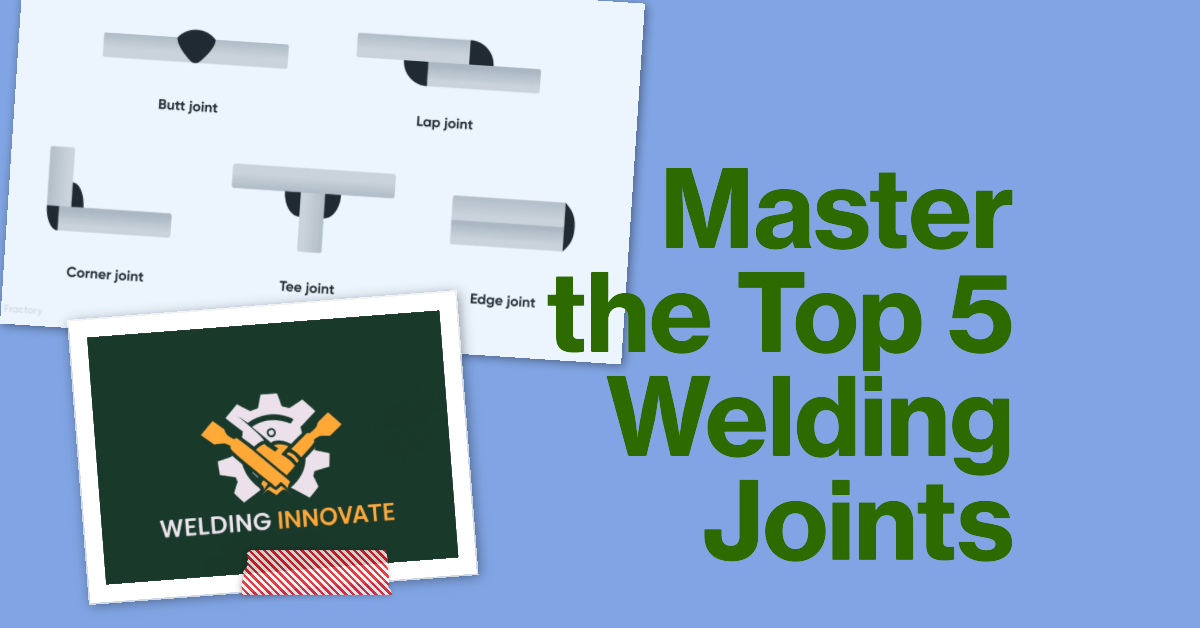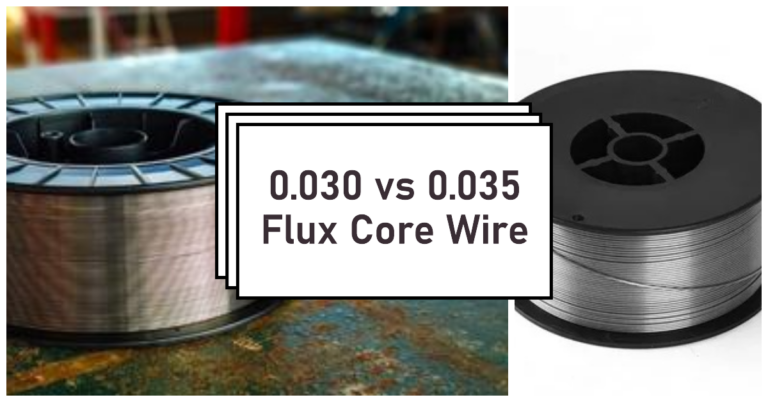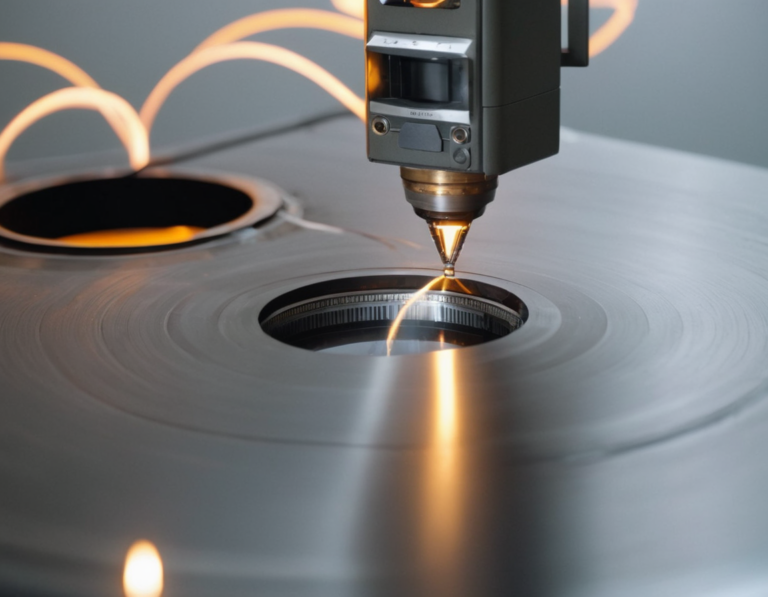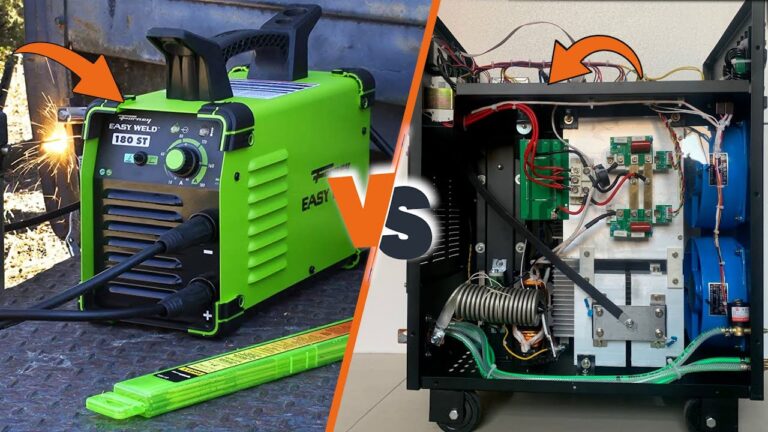Curious about diving into the world of welding joints and techniques? Mastering welding ain’t a cakewalk; it takes patience, focus, and nailing down those techniques to pull off killer welds. The welding game has endless moves.
Unlock a whole bunch of creative and unique possibilities by nailing the right techniques and getting the basics of welding down pat.
In this piece, let me take you on a ride to expand your welding know-how. I’m laying out a list of 5 killer types of welding joints that’ll amp up your game. Each type is geared to beef up your experience and have you knocking out some seriously stunning welding projects. We’re talking about dive into the nitty-gritty of weld joints like butt joint, tee joint, corner joint, lap joint, and edge joint, among others. These welding joint types are the backbone of welded fabrication, offering up different setups to fit the bill for various gigs. Whether you’re vibing with the versatility of groove welds, the finesse of fillet welds, or the specialty of flare-V-groove welds, there’s a welding trick for every project. Let’s roll into this welding journey together, peeling back the layers on the perks, quirks, and classes of welding joints that’ll level up your welding game.
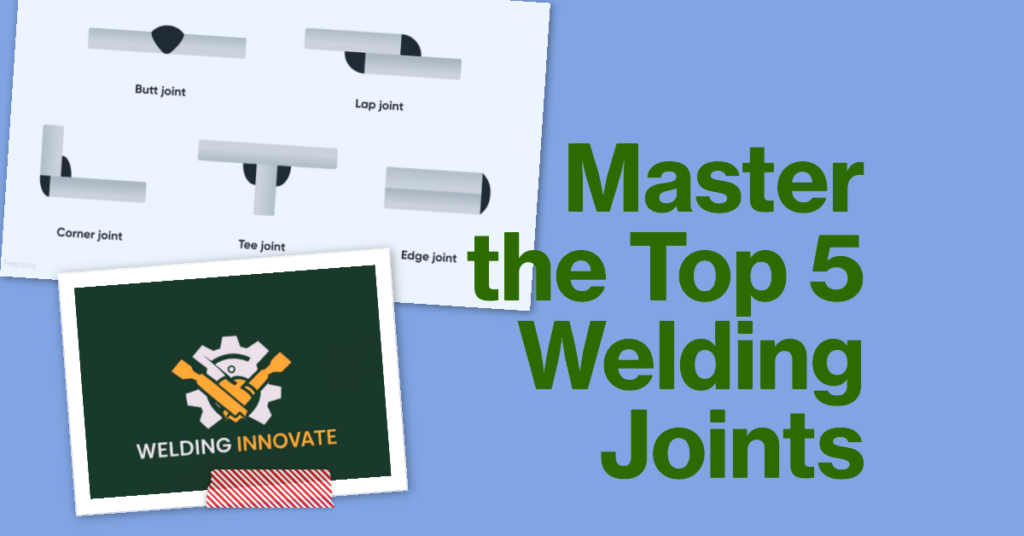
Each type gives you some specific area of application and perfect welds.
Welding Joint Comparison: Pros and Cons Guide
| Welding Joint | Pros | Cons |
|---|---|---|
| T-joint | – Simple to execute | – Limited strength |
| Groove weld | – Strong joint | – Requires precise preparation |
| Bevel-groove weld | – Improved penetration | – Requires skilled preparation |
| V-groove weld | – Deeper penetration | – Requires precise joint preparation |
| U-groove weld | – Good for thicker materials | – Complex preparation |
| Square-groove weld | – Strong joint | – Limited joint accessibility |
| J-groove weld | – Allows for good penetration | – Requires precise preparation |
| Single U grooves | – Suitable for thicker materials | – Complex preparation |
| Double U grooves | – Enhanced joint penetration | – More complex preparation |
| Single V | – Good for thinner materials | – Limited joint strength |
| Double V | – Improved joint strength | – More complex joint preparation |
| Single bevel | – Good for thinner materials | – Limited joint strength |
| Flanged butt joint | – Increased joint strength | – Requires careful alignment |
| Spot weld | – Fast and efficient | – Limited to thin materials |
5 Basic welding joints
In the welding industry, there are commonly 5 types of joints that are used by every welder. Let’s have a look at these joints.
- Butt joint
- Corner joint
- Lap joint
- Tee joint
- Edge joint
1. Butt joint
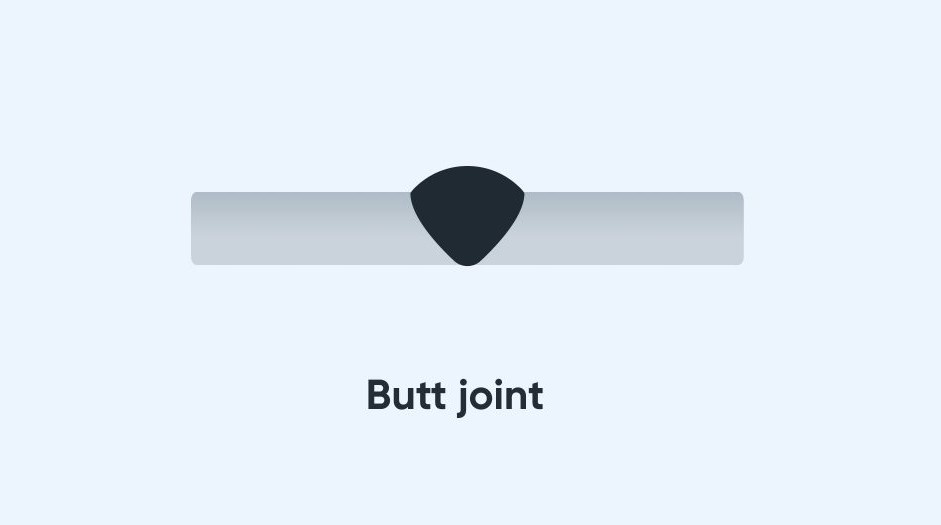
This is the most simple welding joint type. In this type, two metal pieces are welded to join them by placing both of them in place.
It is mostly used in fabrication structures and piping systems. It is one of the effortless joint types, and you can make many variations through it.
These welds are made in various unique ways, while every weld is made for a specific purpose.
You can make these welds commonly for the width of the gap, groove, and layering. Besides this, you can also make them for other weld joints.
Butt welds have many types. To organize its types, there are mainly classified into three groups.
- Single butt welded joints
- Double butt welded joint
- Closed or open butt welded joints
Below mentioned are common types of butt joints groups.
- Single V
- Double V
- Single J
- Double J
- Square
- Single bevel
- Double bevel
- Single U
- Double U grooves
Few problems make the butt welding joints weaken, and they break in short periods. These problems mainly include cracking, excessive porosity, burn-through, incomplete penetration, and entrapment of slag.
These are not major problems; you can easily eliminate them using a small quality and modified welding material.
2. Tee Welding Joint
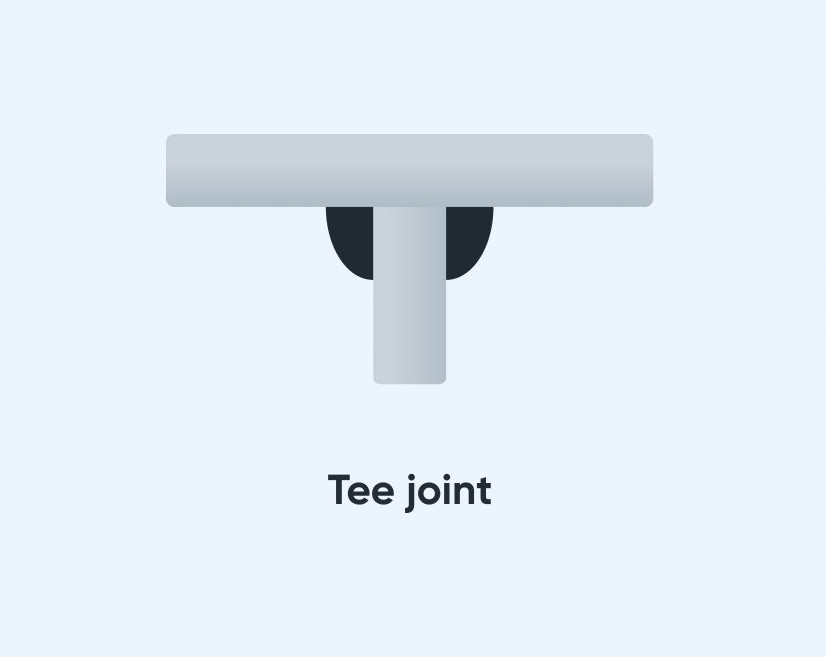
The tee welding is made by welding two metals at an angle of 90°. The T is formed by joining the edges of one metal into the center of another metal plate.
These joints are mostly considered the type of fillet welds. These joints are formed when you weld a pipe or tube on another base plate.
You can get perfect tee joints only if there is effective penetration built into the weld roof. The following are some welding styles that formed tee joints.
- Plug weld
- Fillet weld
- J-groove weld
- Slot weld
- Melt-through weld
- Bevel-groove weld
- Flare-bevel-groove weld
One of the important things about these joints is that they can not be formed with grooves. To make them perfect, a thick and robust metal base can support and bear welding joints’ weight.
The weakness and summon defect of these joints is lamellar tearing. This thing occurred due to gaps and restrictions in the joints.
You can prevent this condition if you place a stopper during their welding. The use of stoppers will help you to prevent joint deformities and make them stronger.
You may also check the 10 Best TIG Welders for the Money reviews.
3. Lap joints
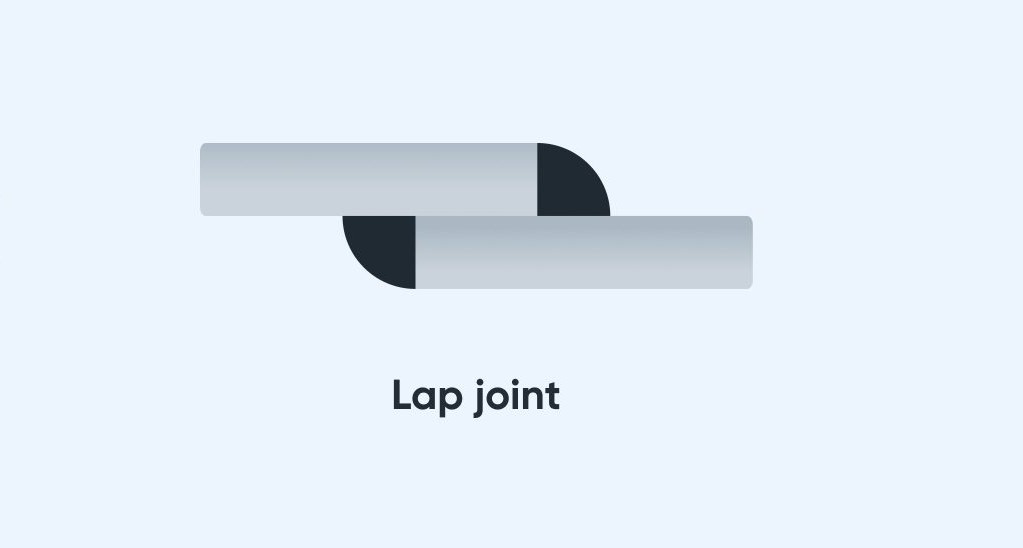
The lap joints are the revised and modified shape of the butt joints. In this technique, two metals are joined together by placing them in an overlapping position.
It is most commonly used to join two metals having different thicknesses. You can join them by welding both sides or only by single side welding.
They are mostly used on metal sheets because they can easily join in overlapping positions.
But for thicker materials, this technique is rarely used. The adjustment of thick material in an overlapping position is difficult, and you can not weld them smoothly and strongly.
Take a look at different styles used for lap joints
- Spot weld
- Plug weld
- Slot weld
- Bevel-groove weld
- J-groove weld
- Flare-bevel-groove weld
The major drawback of this type is the welding of joint corrosion and lamellar tearing. The overlapping welding of material causes these drawbacks.
However, you can also prevent them by using the right welding techniques and modifying welding material.
4. Corner joints
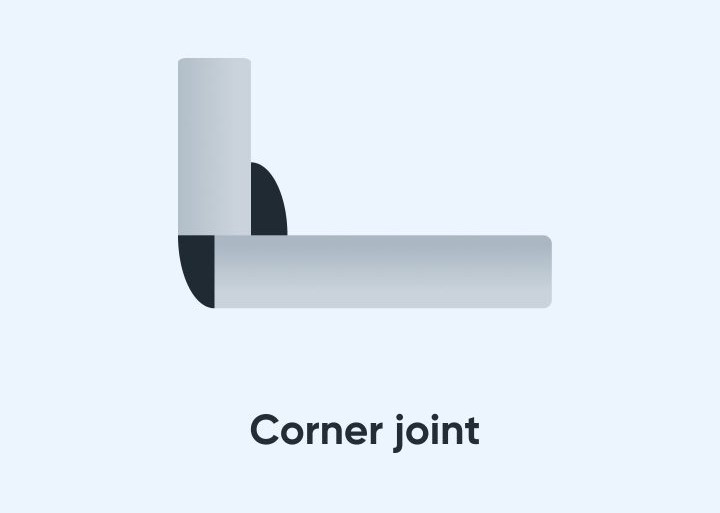
The corner joints are somehow similar to the tee joints. The main difference between them is only the welding of the base plate with other meals.
In T-joints, they are welded in the middle of the base plate. On the other side, both metals are welded to corners forming an L shape in corner joints.
These joints are the most commonly used in the sheet metal industry. They are mostly used in the formation of frames boxes and other similar products manufacturing. For the fitting up of outside corner joints, two methods are usually used.
- V- groove
- Square butt joint
Below mentioned are some common styles used for creating the corner joints.
- J-groove
- U-groove
- Spot
- Edge
- Fillet corner-flange
- Bevel-groove
- Flare-V-groove
5. Edge joints
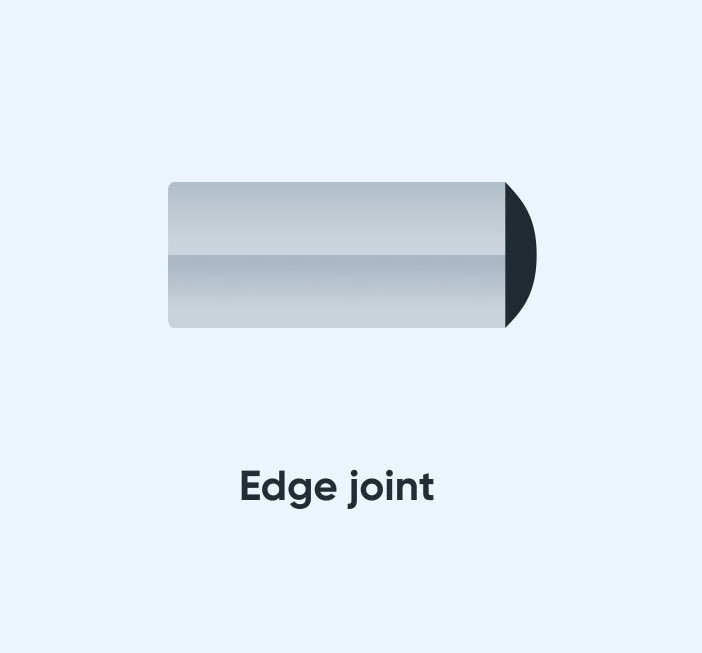
The edge joints are formed by placing the blithe metal surfaces together so that their edges become even. You can also make them by bending and welding both plates at a suitable angle.
These joints are considered groove-type welds. All the pieces are set side by side to their edges and then finally welded. These weld joints allow you to do big projects.
The weakness of most weld joints is caused by the heat input, penetration, and deposition rate. You can make perfect edger joints using the right amount of heat and modifying the other welding factors.
Take a look at edge joints applications
- U-groove
- J-groove
- V-groove
- Bevel-groove
- Corner-flange
- Edge-flange
- Square-groove
The main reason for the edge joint’s weakness is the corrosion because of overlapping parts. Welders should also consider other factors: slack of fusion, porosity, and inclusion for these joint defects.
Conclusion
Summing up the article, we make sure that we have covered all the common types of welding joints.
These welding joints allow you to create some extra unique and sturdy metal joints for different purposes.
The best thing about all these types is that you can use them for your specific welding purposes.
In the last part of our articles, we are looking forward to your valuable suggestions.
If you find your article helping, let us know in the comment section. One more thing never forgets is to share the article with your welding team and colleagues.
FAQ
Question 1. What are the 5 basic types of welding joints?
The 5 basic types of welding joints are:
- Butt Joint – Two pieces are welded together end-to-end in a straight line. This creates a solid seam with full penetration weld on both sides.
- Lap Joint – Two pieces overlap each other partly and are fillet welded. This joint allows for some flexibility.
- Tee Joint – Two pieces meet at right angles, like a T shape. The pieces are fillet welded on one or both sides.
- Corner Joint – The two pieces meet at an angle to form an L or V shape. They are fillet welded on one or both sides.
- Edge Joint – The two pieces are welded together along their edges. This is a modified lap joint without any overlap.
Question 2. What is the purpose of different welding joint designs?
Different welding joint designs serve different purposes:
- Butt joints provide maximum seam strength to join two components end-to-end. They allow for full penetration of weld for high strength.
- Lap joints overlap materials, allowing for some flexibility. They provide a larger welding area and are used when high strength is not critical.
- Tee and corner joints help connect perpendicular surfaces like in structural frames, supports etc. Fillets provide added strength.
- Edge joints connect two flush materials without any overlap. They provide clean, smooth finishes.
So in essence, the joint design depends on factors like required strength, nature of materials to be joined, need for flexibility, service conditions etc. Proper joint design ensures a sound weld.
Question 3. What factors should be considered for selecting a welding joint design?
Some key factors for selecting a welding joint design are:
- Strength required – high tensile or shear loads may need full penetration butt weld. Low strength lap joints may suffice sometimes.
- Material thickness – suitable weld groove dimensions are necessary so weld penetrates entire thickness.
- Type of materials – joint designs vary for steel, aluminium etc. Materials with different melting points need joint designs facilitating proper bonding.
- Access availability – ease of access impacts ability to prepare joint surface and place the weld.
- Service conditions – temperature, corrosion etc. help determine required joint integrity.
- Applicable codes and standards should also be considered. Performing welding procedure qualification helps finalize parameters.
Proper joint design, planning for accessibility, developing WPS/PQR and welder qualification results in good weld quality and avoids defects.
Question 4. What are some common applications of different welding joint types?
Some common applications are:
- Butt joints – joining pipes, structural beams, rail tracks, ship building, tank fabrication etc. requiring high strength seam.
- Lap joints – lightly loaded structures like shelves, furniture, building frames etc. where flexibility is also needed.
- Tee joints – connecting bracings to beams in roof trusses, joining tubular automotive members.
- Corner joints – Handrails, cages, structural frames, conveyor supports etc. with intersecting members.
- Edge joints – Joining sheet metal panels in automotive bodies, enclosures, trailers etc.
So in summary, usage depends on factors like joint loading, strength needs, flexibility requirements and operating conditions.
Question 5. What can welders do to ensure safety while welding joints?
Some tips for welders to ensure safety while welding different joints are:
- Wear approved welding helmet, gloves, shoes etc. for protection from heat, fumes & radiation.
- Prevent exposure to arc rays by using welding screens. Bystanders also need protection.
- Ensure there is adequate illumination and ventilation in work area.
- Securely clamp work pieces to avoid slippage and do not weld with unrestrained components.
- Keep flammable materials like grease, oil etc. away from welding. Have a fire extinguisher on standby.
- Avoid touching the joint soon after welding as it remains hot for some time. Let it cool sufficiently before handling.
- Be mindful of objects like lifting equipment which may be obstructing access.
So in summary, welders must adhere to safe welding guidelines mentioned in codes like AWS D1.1, take all precautions and wear appropriate protection for personal safety while welding different joints.

